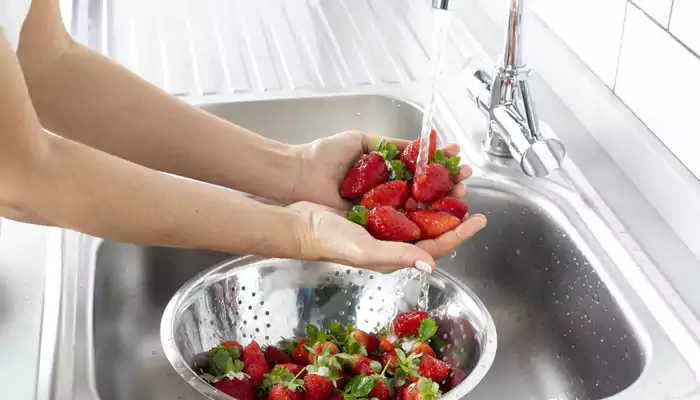
How to clean strawberries to avoid hepatitis A?
Cleaning strawberries properly is important to minimize the risk of foodborne illnesses, including hepatitis A. Hepatitis A is a viral infection that can be transmitted through contaminated food and water. To reduce the likelihood of contracting hepatitis A or any other foodborne illness from strawberries, follow these steps for thorough cleaning:
Wash Your Hands:
Before handling strawberries, make sure to wash your hands with soap and warm water for at least 20 seconds. This will help prevent the transfer of any harmful bacteria or viruses from your hands to the strawberries.
Gather Your Supplies:
You’ll need a clean colander or strainer, a bowl, and access to cold running water.
Inspect the Strawberries:
Before washing, carefully inspect each strawberry for any signs of mold, bruising, or discoloration. Remove any berries that show these signs, as they might be contaminated.
Rinse with Cold Water:
Place the strawberries in the colander or strainer and hold it under cold running water. Gently agitate the strawberries using your fingers to ensure that all surfaces are thoroughly rinsed. Avoid using soap, bleach, or any chemical cleaning agents, as these can be harmful if ingested.
Gently Rub the Berries:
While rinsing, you can gently rub the surface of the strawberries with your fingers to remove any dirt or debris. Be careful not to apply too much pressure, as strawberries are delicate fruits.
Drain and Repeat:
Allow the strawberries to drain in the colander or strainer for a few minutes. Then, transfer them to a clean bowl. If the water in the bowl appears cloudy or dirty, repeat the rinsing process until the water runs clear.
Pat Dry:
Gently pat the strawberries dry using clean paper towels or a clean cloth. This step helps remove excess moisture, which can contribute to the growth of bacteria.
Store Properly:
After cleaning, you can store the strawberries in the refrigerator. Make sure they’re placed in a clean and dry container or covered with plastic wrap to prevent cross-contamination with other foods.
Use Within a Reasonable Time:
Strawberries have a limited shelf life, even when properly cleaned and stored. Consume them within a few days to ensure freshness and reduce the risk of foodborne illnesses.
Remember that while these steps can significantly reduce the risk of hepatitis A and other foodborne illnesses, they do not guarantee complete elimination of all potential pathogens. It’s essential to practice good hygiene, proper food handling, and safe cooking practices to protect yourself and your family from foodborne illnesses.

